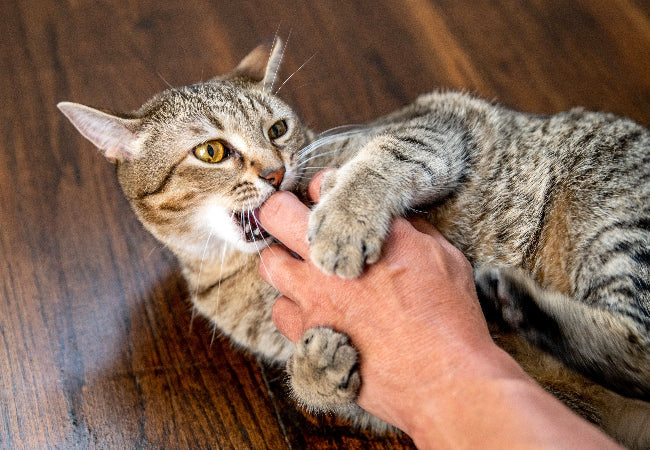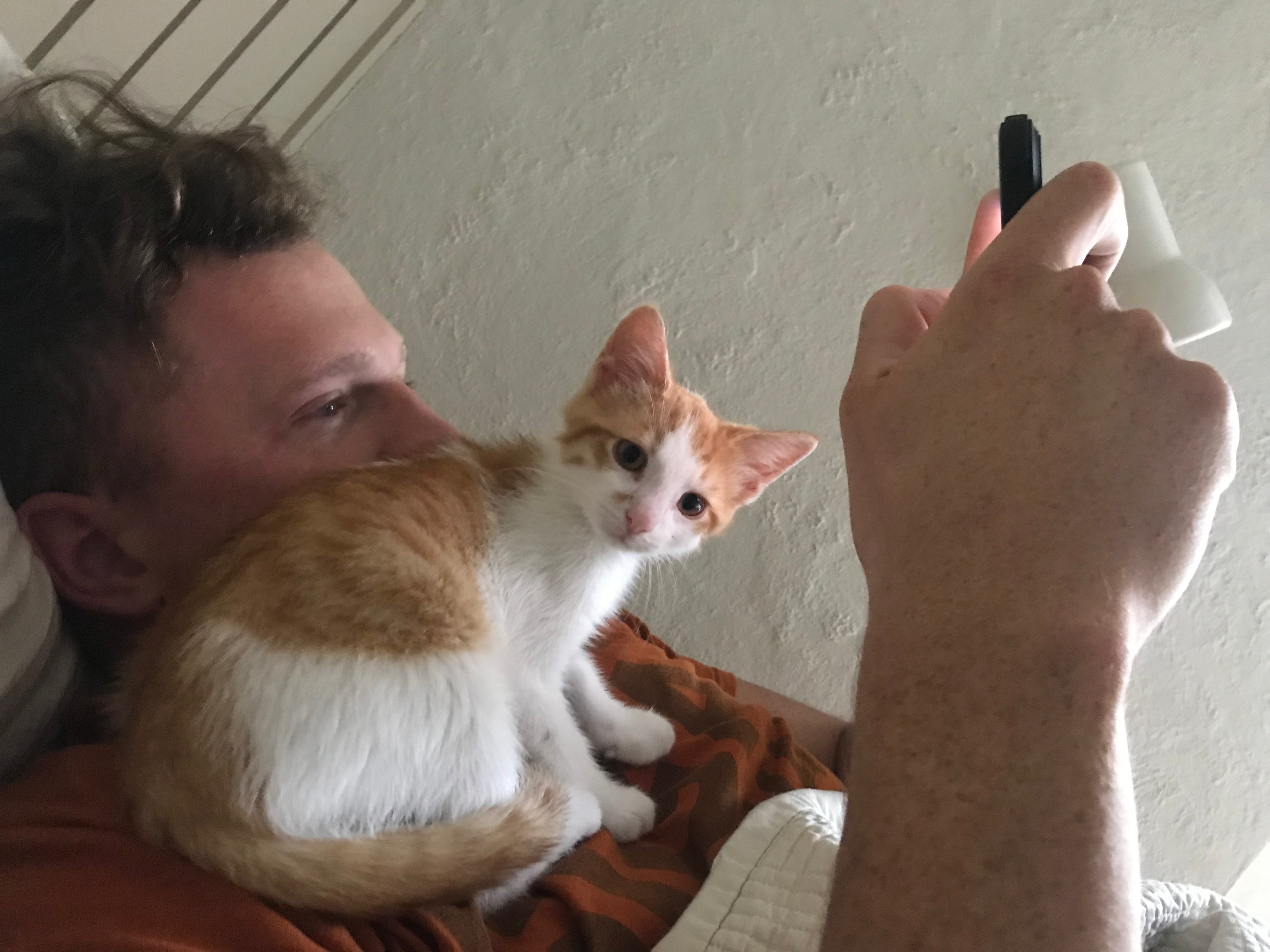Vet-Approved 2025 Guide: Preventing Cat Biting and Scratching 🐱⚠️

In this article
Vet-Approved 2025 Guide: Preventing Cat Biting and Scratching 🐱⚠️
By Dr. Duncan Houston BVSc
Introduction 🐱
Biting and scratching are natural behaviors for cats, rooted in their instincts for hunting, defense, and communication. While these behaviors are normal, they can sometimes pose challenges for pet owners. Understanding the triggers behind biting and scratching, recognizing the early warning signs, and implementing strategies to prevent these behaviors are essential for creating a safe and harmonious environment for both you and your feline companion. 💖
Why Cats Bite and Scratch ⚡
Cats bite and scratch for several reasons, each linked to instinct, emotion, or physical sensation:
-
Play aggression 🎾
Kittens and young cats often engage in play fighting, which includes biting and scratching. This behavior helps them learn boundaries, develop coordination, and practice hunting skills. -
Fear or anxiety 😿
Cats may react defensively with bites or scratches when they feel threatened, scared, or anxious. This can happen in new environments, around strangers, or during sudden loud noises. -
Pain or discomfort ⚕️
Biting and scratching can be a response to pain, whether from illness, injury, dental issues, or an ill-fitting collar. -
Overstimulation ✋
Even affectionate cats can become overstimulated by too much petting or handling, prompting them to bite or scratch to signal “enough.” -
Territorial aggression 🏠
Some cats use biting or scratching to assert dominance or protect their territory, whether against other pets or humans entering their space.
Identifying Signs Your Cat is About to Bite 👀
Recognizing the warning signs can help prevent bites and scratches before they occur:
-
Ears flattened or turned back 👂 – Indicates fear, anxiety, or aggression.
-
Tail flicking or swishing 🐾 – A sign of agitation or overstimulation.
-
Growling, hissing, or spitting 🗣️ – Vocal warnings that your cat feels threatened.
-
Dilated pupils 👁️ – Often a signal of stress or readiness to defend.
-
Tense body posture 🐈⬛ – An arched back, raised fur, or crouched stance shows your cat is preparing to strike.
Preventing Biting and Scratching in Kittens 🍼
Kittens are learning social and hunting behaviors. Early intervention and guidance can help reduce problem behaviors:
-
Redirect their energy 🎯
Provide toys that mimic prey, such as feather wands or small balls, to allow safe and constructive play. -
Socialization 🌟
Introduce your kitten to different people, animals, and environments to reduce fear-based aggression. -
Gentle discipline ✋
If your kitten bites or scratches, immediately stop interaction and walk away briefly. This teaches them that aggression results in loss of attention. -
Regular exercise 🏃♂️
Play sessions help expend energy and reduce frustration or boredom that can lead to biting or scratching.
Preventing Biting and Scratching in Adult Cats 🐾
Even adult cats benefit from continued guidance and enrichment:
-
Environmental enrichment 🏰
Provide toys, climbing structures, and scratching posts to prevent boredom-related aggression. -
Consistent routine ⏰
A predictable schedule for feeding, play, and rest reduces anxiety and encourages calm behavior. -
Proper handling 🤲
Learn your cat’s tolerance levels and handle them gently to avoid overstimulation. Avoid sudden movements and respect their boundaries. -
Address underlying issues ⚠️
Sudden changes in aggression or biting behavior may indicate health problems. Consult your veterinarian to rule out pain or illness.
Conclusion 💖
Understanding why cats bite and scratch, recognizing early warning signs, and implementing preventative strategies are essential for a safe, happy home. By providing engaging outlets for energy, maintaining routines, and addressing any underlying health concerns, you can reduce aggressive behaviors and strengthen the bond with your feline companion. 🐱💕








